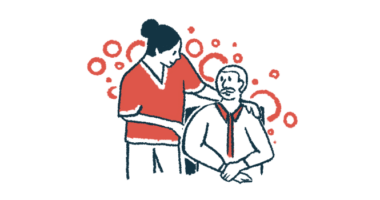Exercise in Older Parkinson’s Patients May Lower Risk of Falling

Exercise can be a powerful prescription for improving movement in Parkinson’s disease (PD) patients. Researchers, trying to pinpoint those exercises that might best quell PD symptoms, recently reported that both power training and yoga were helpful to older people with PD. Their study, titled “Comparative Impact of Power Training and High-Speed Yoga on Motor Function in Older Patients with Parkinson’s Disease,” appeared in the journal Archives of Physical Medicine and Rehabilitation.
In PD, death of dopamine-producing neurons in a brain region called the substantia nigra causes problems with movement, rigidity and tremors. PD patients may experience falls, a particularly worrisome problem for older individuals. Medication and other treatments tend to focus on replacing the lost dopamine, and are not a cure. Exercise as an additional therapy can help to improve physical activity in people with PD, especially in easing symptoms like loss of balance or gait that leads to falls.
The study, led by Meng Ni of the Laboratory of Neuromuscular Research and Active Aging, University of Miami, included 42 PD patients, age 60 to 90, with an average age of 72. The study’s subjects had fallen at least once in the past year as a consequence of the disease. Researchers assigned participants to either high-speed power training, specifically designed yoga (both on a twice-weekly schedule) or no exercise for 12 weeks. Several standard tests were used to measure improvements, including overall PD movement symptoms via the Unified Parkinson’s Disease Rating Scale (UPDRS). They also assessed balance, reach, leg stance, posture, walking speed and leg press.
Both exercise groups improved in all of the physical tests except for reach (on the most affected side of the body), stance, and posture. Both yoga and power training were equally effective. The investigators noted, “Our three month, twice-weekly PWT and YOGA programs were able to alleviate motor symptoms, improve balance function and gait, and increase leg muscle strength and power in patients with mild to moderate PD. These two training systems should be considered viable interventions in rehabilitation programs designed to translate improvements in physical function into improvements in functionality and reductions in fall probability.”
Although it may be assumed that better physical fitness reduces the likelihood of falling, the study did not specifically address whether study participants experienced reduced falls. Further study of the exercise program could help to establish this. Still, based on these results, physical exercise appears to be helpful for older people suffering with PD.






